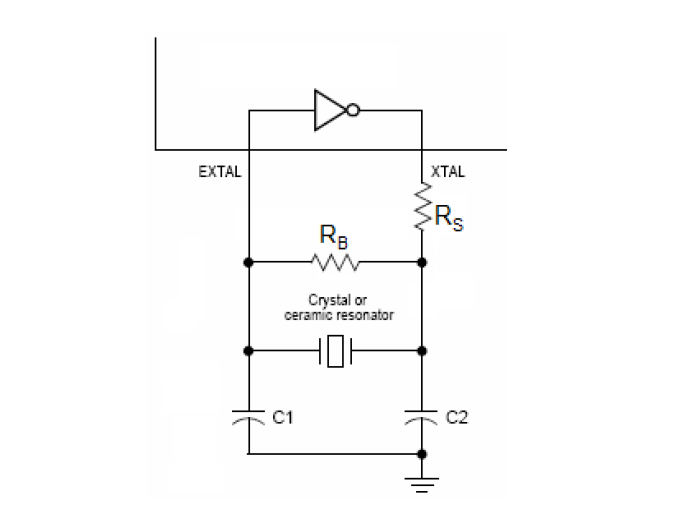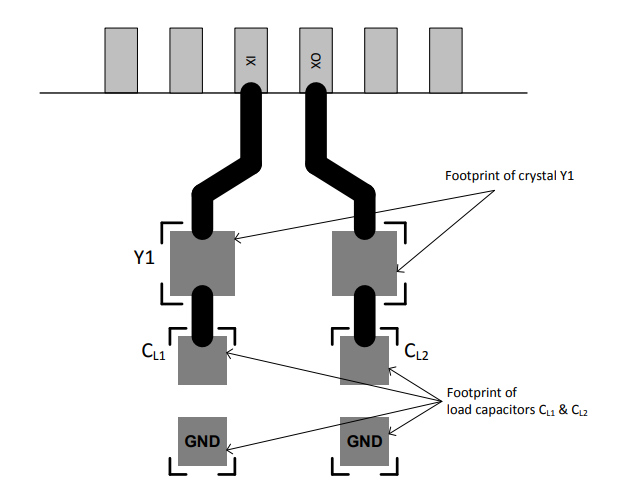
关于晶振皮尔斯振荡电路中的Rs,Rf,C1和C2的作用与取值,晶诺威科技解释如下:
In general, the smaller the value of Rs , the faster the oscillator will start. Rs must be large enough to avoid overdriving the crystal, yet small enough to provide enough current to start oscillation quickly (an Rs that’s too large could cause the oscillator to fail to start). Rs can in some cases be zero, especially with high-frequency crystals.
一般来说,Rs的值越小,振荡器启动得越快。Rs必须足够大以避免电流过驱动晶体,但又足够小以允许电路提供足够的电流来快速启动振荡(Rs太大可能导致振荡器无法启动)。在某些情况下,Rs可以是零或省略,尤其是对于高频晶体。
RB, also known as feedback resistance (Rf) , is used to bias the input of the inverting amplifier. By pulling the input of the amplifier toward the voltage at the output, an unstable condition is created, stimulating oscillation. It can also be observed that feedback resistance affects the loop gain of the amplifier, which is augmented as the value for the feedback resistance is increased.
RB,又称反馈电阻(Rf:feedback resistance),用于偏置反相的输入放大器。通过将放大器的输入拉向输出端的电压,会产生不稳定的条件,从而激活振荡电路。我们还可以观察到,反馈电阻会影响放大器的环路增益,随着反馈电阻值的增加,环路增益会增大。
The value for capacitors C1 and C2 must be chosen correctly so that the series combination: (C1*C2) / (C1+C2) gives a value close to the load capacitance, CL, specified by the crystal manufacturer. Be sure to add stray capacitances (Cs) in the previous calculation. Occasionally, C1 can be chosen to be slightly smaller than C2 to increase the voltage swing at EXTAL without compromising stability; but for most applications, it is recommended to have the same value for C1 and C2.
我们必须针对电容 C1 和 C2 进行正确取值,以便串联组合(C1*C2)/(C1+C2) 给出的值接近晶体制造商指定的负载电容CL。请确保在该公式的计算中加上杂散电容Cs。有时,可以选择C1值略小于C2值,以便增加EXTAL的电压摆幅(提升晶振起振能力),而不会影响晶振的稳定性;但对于大多数应用,建议 C1 和 C2等值。





